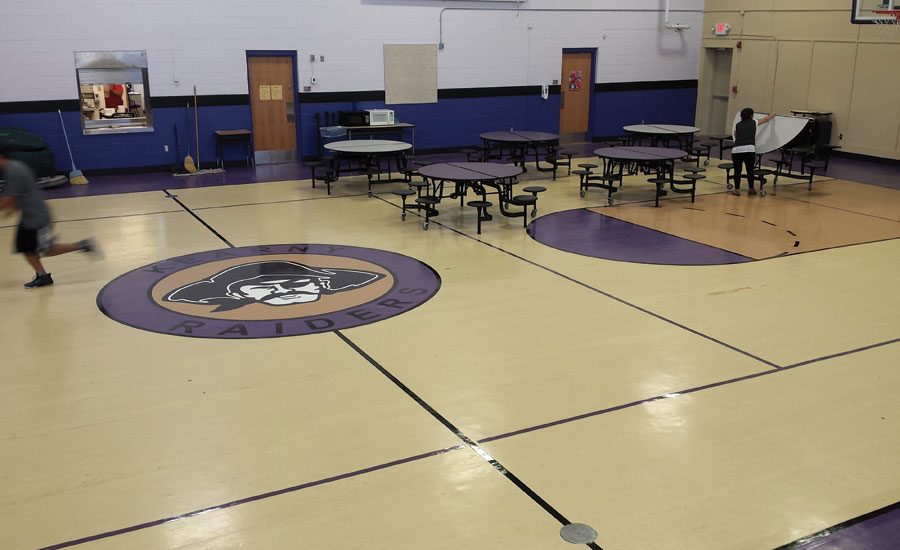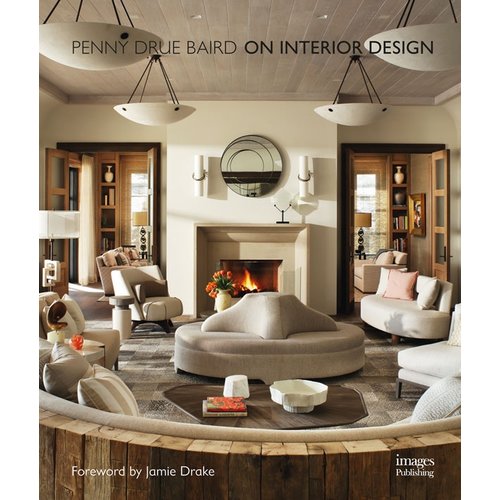Choosing Flooring Products for Education Settings

Metroflor’s new Aspecta Ten product line featured in a higher-education classroom.



Novalis AVA commercial-grade luxury vinyl tile at the Sichuan Children’s House, a home for young children whose parents are working remotely for months at a time in major industrial towns in China.

Novalis AVA commercial-grade luxury vinyl tile at the Sichuan Children’s House, a home for young children whose parents are working remotely for months at a time in major industrial towns in China.

Mohawk’s IVC Flexitec sheet vinyl includes the @ Work Collection, bringing trendy design and durable style into a product built for performance, the company says.






In an education environment, it comes down to designing spaces that fit the exact use of the space. A kindergarten classroom isn’t going to feature the same design trends as a college dorm room, nor will a principal’s office reflect the same ideas as a high school auditorium. Whether the project is designed mostly for resilience, functionality, modernization or just a simple wow-factor, each ultimately conveys a look and feel suitable for the end-user.
“If the building is a large K-12 school where there’s a lot of foot traffic, then the entryway should definitely have a different type of flooring than an administration office. As new schools are being built today, we’re seeing a lot of different types of flooring being used—and it’s really dependent upon the use of a specific room or area,” said Carol Priefert, segment marketing manager, Armstrong Commercial.
According to Dave Thoresen, Mohawk senior vice president, resilient, many education facilities are starting to put aside the look of VCT and other looks that have haunted education settings for many years.
“Education facilities are now trying to upgrade to an LVT that will obviously get them a lot more design yet still remain kid-friendly,” he said. “They’re looking for a design that has great performance and also gives them the ability to create different environments and atmospheres based on the age of the children.
“The ideal surface for an education environment is one that has good ergonomic and acoustic properties, promotes good indoor air quality and is also attractive, durable and easy to clean.”
“Younger children obviously like more invigorating pops of color and LVT allows consumers to use those colors as they want. If you move into higher education, they’re looking for something a little more sophisticated and classy.”
Paul Eanes, Metroflor’s vice president of sales, has been seeing a major shift away from VCT into luxury vinyl plank and tile. “This is happening not only for aesthetic reasons, but for life/capitalized costing reasons as well. VCT has been especially prevalent in K-12 for more than 30 years, but it is losing ground quickly. On the other hand, higher education has been using a significant amount of LVT/LVP for many years, as they are competing for students who demand attractive and vibrant surroundings.”
Rick Morris, USFloors vice president of sales—commercial, thinks LVT is the best choice in flooring for education settings because “LVT offers superior aesthetics, ease of maintenance and superior lifecycle costing.”
John Wu, president and CEO, Novalis Innovative Flooring, echoed these sentiments. “We know school systems look carefully at maintenance cost and time necessities (particularly disruptions to classes for cleaning), replacement lifespan in a high traffic environment, ugly staining from accidental spills or vandalism, and a host of indoor environmental issues from VOCs to sanitary concerns. On all of these considerations, resilient—and especially LVT—makes the grade with flying colors.”
Bo Barber, Ecore vice president of marketing and strategic business development, noted, “The ideal surface for an education environment is one that has good ergonomic and acoustic properties, promotes good indoor air quality and is also attractive, durable and easy to clean.”
According to Flexco marketing manager, Melissa Quick, rubber flooring is an excellent choice for education environments. “Rubber is always a plus for the low maintenance and sound absorption properties. We have several schools that have made the move from VCT and carpet to rubber flooring.
“Some facilities want to put the cheapest floor in and replace it later after they budget more money for that, but if they truly want to put a good flooring in that is going to last, then rubber is definitely the way to go. It holds up really well to the heavy traffic and with a regular maintenance schedule, the floor will look good for many years to come.”
Robert Segers, vice president, Musson Rubber, agrees. “We feel a commercial-quality, non-wax resilient product makes the most sense for high-traffic areas such as hallway, corridors and multi-purpose rooms. Sheet rubber has a long life and requires no waxes or finishes so the maintenance savings alone are substantial. In addition, sheet rubber is dimensionally stable.”
Types of Education Flooring
Renee Tester, QEP product marketing and technical services manager, noted that today’s classrooms need versatile flooring due to factors such as high traffic, noisy settings, the constant movement of classroom furniture, moveable area dividers and other challenges. “Teacher and student comfort are also very important. Our Harris Luxury Vinyl Cork flooring is an excellent choice providing superior durability, cushioning comfort, insulating warmth and more silence underfoot. In addition, LVC is extremely moisture-resistant and able to handle the inevitable occasional spills that occur in classroom settings.”
Mohawk’s LVT products run the gamut from loose-lay to glue-down, noted Thoresen. “Everything from very thin, multi-family to the thickest, heaviest design and loose-lay products; there’s a wealth of different click products in the middle as well as a lot of different glue-down products.”
As for other resilient options, Quick noted Flexco’s portfolio of “rubber tile and sheet, vinyl tile, along with rubber stairs treads, wall base and coordinating accessories to complete any education application.”
USFloors’ USFContract offers Stratum with COREtec, a patented, waterproof, dimensionally stable engineered luxury vinyl that does not require acclimation, masks subfloor irregularities and has a built in underlayment for acoustical enhancement, according to Morris. “In addition, we offer cork which is used in media rooms or library settings because of superior acoustical properties.”
According to Barber, Ecore’s education options include “ECOsurfaces Classic for classrooms and hallways, which is comprised of 90% recycled rubber; Pinnacle 2 carpet for entryways and other heavily trafficked areas; and the Expona collection, which is ideal for cafeterias because it’s slip-resistant, easy to maintain and the luxury vinyl tiles come in a multitude of surface designs.”
Eanes noted that Metroflor’s contract LVT flooring brand Aspecta features a 28 mil wearlayer with a 3.2mm gauge designed to reduce the chance of unsightly telegraphing. “Aspecta features abstract designs that are ideal for a whole host of education environments. The collection enhances the creation of a theme or branding of a space, especially when the flooring selection is of high importance as the decorative statement. Many education settings, such as union buildings, common areas in dormitories and even classrooms, can be enhanced with Aspecta Abstracts.”
Novalis just introduced a healthcare and educational-targeted line in its new AVA commercial collection called SNSE. “There are 18 SKUs of 12” by 24” tiles in vivid, bold colors and complementing neutrals,” stated Wu. “The design is a flowing grain pattern that not only looks great, but is actually maintenance-friendly for high-traffic areas. We think in school settings, flooring can play a stimulating role for the learning environment—especially in elementary schools.”
Trends in Product Use
“In the past, the most prevalent flooring was VCT, but today it greatly varies across the board,” explained Priefert. “Rubber is the least used in education settings, especially in comparison to VCT or linoleum. You might see it from time to time in gym floors in K-12 buildings.
Thoresen believes the most popular resilient flooring used in education settings today is glue-down. “People seem to be more comfortable with things that glue down to the floor and give a sense of security. I think people are still experimenting with a lot of the click products and click products, especially if you look in commercial, have probably taken a step back over the last year.”
Commercial carpet, vinyl sheet or tile, and linoleum are other common floor coverings used in classroom settings, expressed Tester. “Solid tile and finished concrete often are used in hallways, bathrooms, recreational and food service areas while hardwood and cork flooring are usually restricted to lower traffic areas such as administrative offices and conference rooms.”
Tammy Ibanez, designer with Manley Spangler Smith Architects, P.C., stated, “The majority of our educational buildings have rubber tile in the classrooms, VCT in the corridors and carpet in the administrative/media areas.”
Added Wu, “If you walk through a new school today, you’ll see pretty much what you’d expect: ceramic in restrooms; wood in basketball courts; LVT or VCT in classrooms, dorms, hallways, first aid stations and cafeterias; natural stone at entrances; and carpet in administrative offices and libraries.”
“The design trends we’ve really seen a lot of recently is adding more bold, jewel-tone colors into the product line,” stated Thoresen. “I think designers would like to see something with less wood, but LVT still sells probably 80% wood [visuals].”
Eanes discussed Metroflor’s Aspecta Washed Concrete, which he said “imitates the appearance of polished stained concrete but at half the cost. Also, even our wood looks like Aspecta Summer Pine Driftwood give schools a more traditional and homelike setting. Abstracts are quite popular in pre-K as well, with bright colors and designs that keep the environment cheerful.”
Patterning a floor with school colors and logos also remains popular, Barber noted. “Schools want to incorporate their colors, logos or other patterns into the surfacing. Designers are also requiring surfaces that are more sustainable.”
Wu agreed. “Designers are using flooring to reinforce a school’s brand identity in very creative ways, from color palette selections, floor patterns and highly intricate designs cut and designed of the school’s logo or mascot in common areas. LVT is especially easy to work with in the hands of an artistic installer to create these floor logos.”
Flooring patterns used for wayfinding also remains important, Morris stated. “Physical environments are changing to support collaborative learning styles. As walls are coming down, floors are being used to define spaces and for wayfinding. Colors are more subdued than in the past and there is more of a residential feel.”
Priefert sees a heightened sense of creativity in education spaces. “We’re seeing more colors and patterns being deliberately chosen for specific rooms and/or buildings to portray a certain look or feel. There are some really cool aesthetics now in both K-12 and higher education where we’re seeing so many different looks, products and textures being used and paired together. They’re bringing out some really intriguing building spaces.”
Thoresen thinks one of the biggest opportunities for the education segment will definitely be higher education. “If you look at the different types of flooring that’s available in higher education, in everything from dormitories to classroom settings to almost corporate type buildings, we’re finding more and more going into that category. We really find a huge success rate moving into higher education. I think that’s probably one of the most promising areas.”
Looking for a reprint of this article?
From high-res PDFs to custom plaques, order your copy today!













